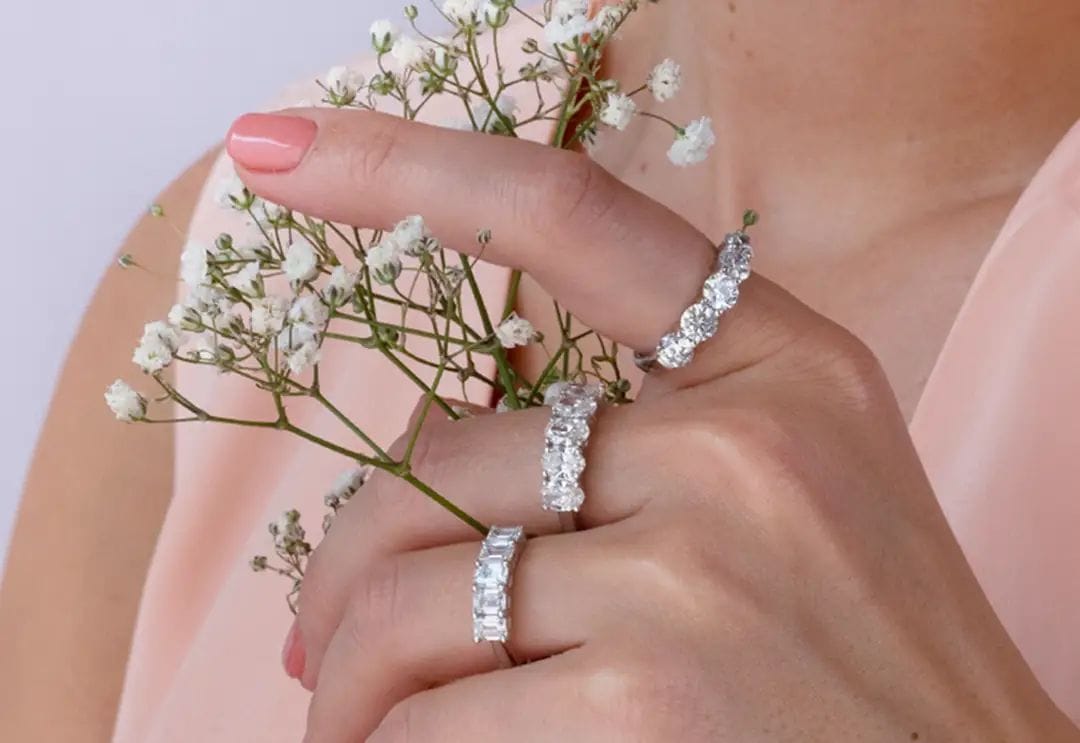Introduction to Lab Diamond Rings
Welcome to a conclusive helper on claws for lab diamond rings! If you’re keeping watch for a stunning lab-grown diamond ring or just curious about the specific pieces of ring setup, you’re impeccably found. Today, we’re diving into the universe of claws — those little metal pieces that hold your diamond set up and make your ring shine. Prepared to examine? How about we start!
What Are Claws in Lab Diamond Rings?
Definition and Reason
Main concerns at the forefront: what exactly are claws in a lab diamond ring? Claws, generally called prongs, are the metal settings that hold your diamond securely set up on your ring. Think of them as the little “hands” that keep your important gem away from exiting. They’re not just utilitarian yet furthermore a key arrangement part that influences the general look of your ring.
Kinds of Claws
With respect to claws, there’s no one size-fits-all. There are a couple of kinds of claws, each with its outstanding characteristics and benefits:
Prong Settings:
The most notable kind of setting, prongs are the excellent choice for showcasing a diamond. They hold the stone from the sides, permitting the diamond’s highlights to be revealed for most noteworthy shine.
Bezel Settings:
A state of the art turn, bezel settings encase the diamond with a metal edge, offering extra protection and a smooth, moderate look.
Channel Settings:
In channel settings, diamonds are set between two metal strips, making a smooth, nonstop line of gleam.
Clear Settings:
Clear settings incorporate little diamonds or gemstones set eagerly together to make a “cleared” appearance of reliable gleam.
Benefits of Different Snare Settings
Prong Settings
Benefits and detriments of Prong Settings
Prong settings are well known which is as it ought to be. They’re versatile and permitted the diamond to shimmer with unimportant hindrance. The essential advantage? They grant light to go through the diamond from all places, working on its magnificence. However, the drawback is that prongs can at times get on things, which might be a concern for those with a working lifestyle.
Bezel Settings
Potential gains and drawbacks of Bezel Settings
Bezel settings are breathtaking for individuals who slant toward a smooth, present day look. They offer dominating affirmation for your diamond since the metal encompasses the stone. This sort of setting is ideal for customary wear, as it defends the diamond from thumps and scratches. The fundamental disadvantage might be that it can obscure the sides of the diamond, imperceptibly lessening the brilliance.
Channel Settings
Benefits and impediments of Channel Settings
Channel settings are great for individuals who need an interminable line of diamonds. They are secure and make a smooth, choice look. However, cleaning can be a piece trickier, as trash bin slow down in the channels.
Care and Upkeep for Claws in Lab Diamond Rings
Routine Cleaning Tips
Keeping your claws and diamond tidy is principal for staying aware of their brilliance. Use a fragile cleaning agent plan and a sensitive brush to clean your ring regularly. Avoid merciless engineered substances and reliably flush your ring totally to take out any cleaning agent development.
When to Search for Capable Help
If you notice that a snare is bowed or free, this present time is the ideal open door to visit a diamond subject matter expert. Standard check-ups will ensure that your diamond remains securely set up and that your ring stays in immaculate condition.
Designs in Claws for Lab Diamond Rings
Current Popular Plans
Of late, paw settings have seen a couple of strengthening designs. From exemplary roused prongs to smooth, present day bezels, there’s a paw style to match each taste. Multi-snare settings and staggering plans are ending up being dynamically notable for individuals who need a stand-out and eye-finding ring.
Lab grown diamonds are real diamonds created in a controlled environment rather than being mined from the earth. These diamonds have the same physical, chemical, and optical properties as natural diamonds, thanks to advanced technology that replicates the natural conditions under which diamonds form. Lab-grown diamonds are produced using two main methods: High Pressure High Temperature (HPHT) and Chemical Vapor Deposition (CVD).
Future Examples to Watch
Looking forward, we can expect greater improvement in snare plans. Really focus on new materials and innovative settings that blend ordinary craftsmanship in with contemporary style. The inevitable destiny of snare settings is splendid, and there’s an extraordinary arrangement to expect!
Conclusion
That is all there is to it — a careful gander at claws for lab diamond rings! From understanding what claws are to exploring different settings and their benefits, you presently have all the information you need to go with an informed decision. Whether you’re buying another lab diamond ring or just motivated by embellishments design, acknowledging about claws can help you with esteeming the creativity and usefulness behind these magnificent appearances.



